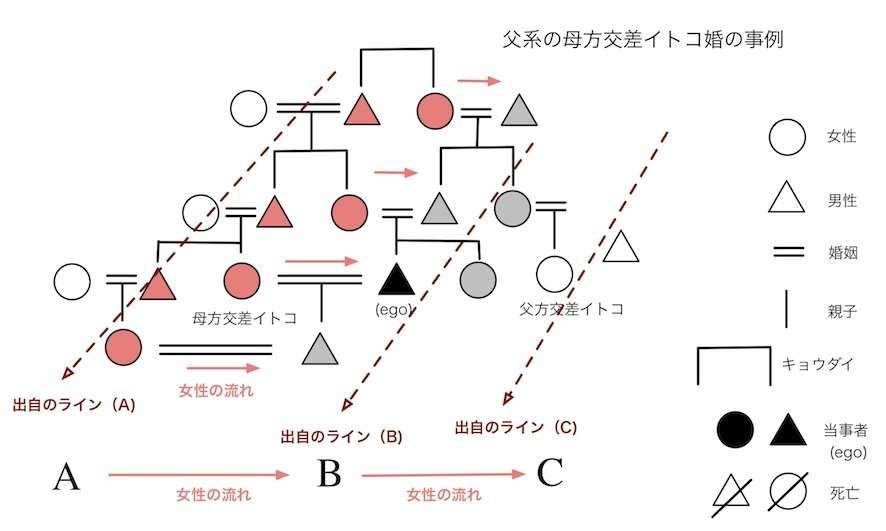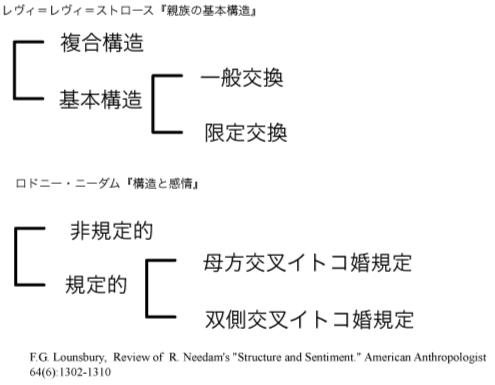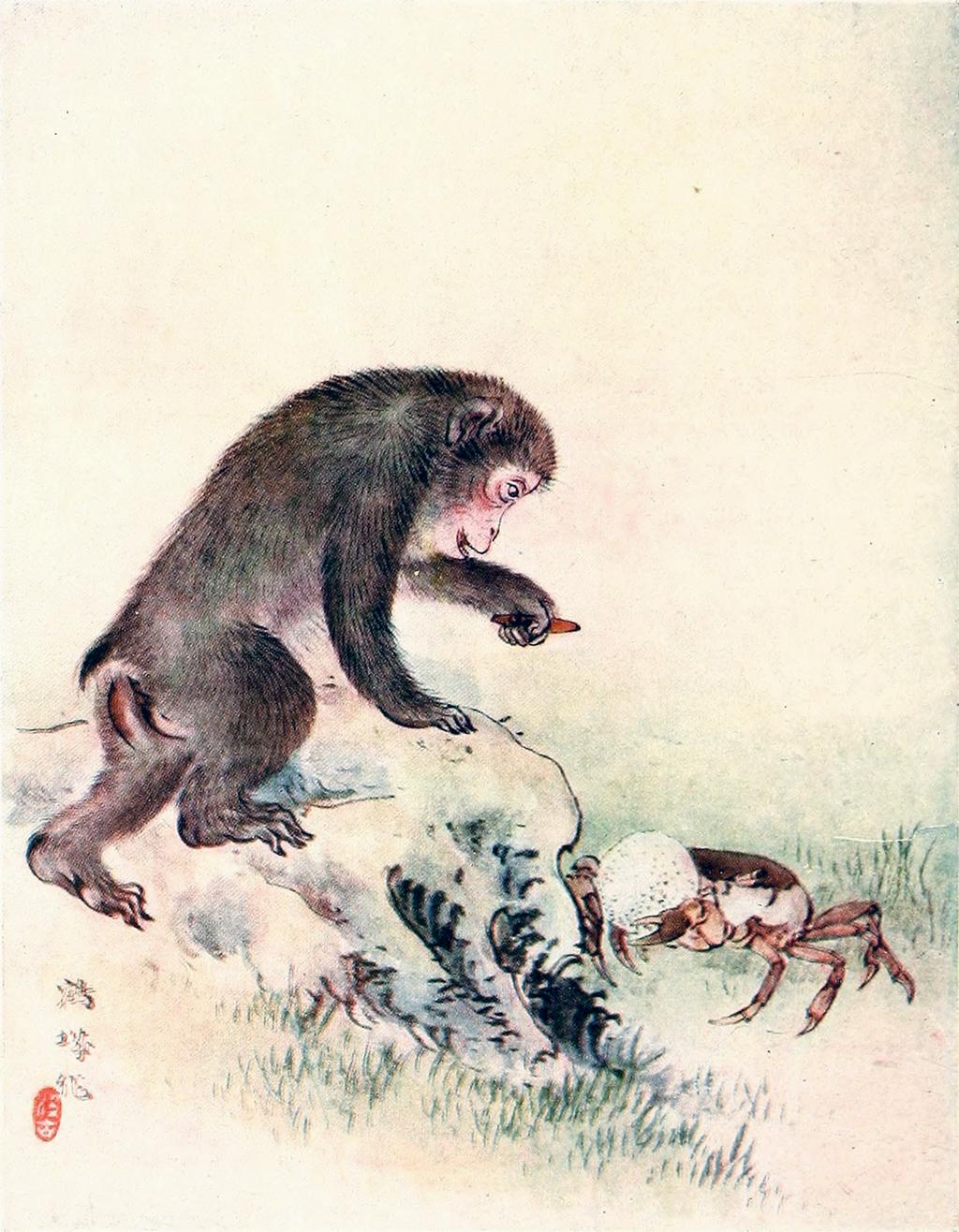reciprocity, reciprocal institution; GOSHU-SEI
Kula, a ritual and ecomomics practice of the Trobirand islanders
互酬性・互酬制
reciprocity, reciprocal institution; GOSHU-SEI
Kula, a ritual and ecomomics practice of the Trobirand islanders
解説:池田光穂
互酬性(reciprocity)とは、ものの相互のやり とりのこと、あるいはそれにもとづく制度のことである。レシプロ・エンジンが、ピスト ンを往復するように、ものが相互に〈送り手〉と〈受け手〉の間を対称的に往き来することである。したがって、ある相——時間のみならず社会空間——と別の 相では、送り手と受け手が相互に入れ替わる。結婚、葬式、中元や歳暮など、贈り物や寄付・金銭などが、相互に往き来することを全般を、互酬(ごしゅう)と いう。日本語の互酬は、お互いに報酬を受けると書くがごとくである。
互酬性に基づく社会制度のことを、同じ音
であるが互酬制(ご
しゅうせい)ないしは互酬制度と呼ぶ。
マルセル・モースやカール・ポランニー(Polányi károly, 1886-1964 [Karl Polanyi])による と、互酬性は、市場経済 が確立する以前からあり、市場経済後も続く制度——痕跡化するが——であ り、人間集団の経済的な基本的関係であるとか、時代的に古くあるという意味で、原始経済あるいは未開経済(ともに primitive economy)を表す代表的なものとして、長く研究されてきた。ポランニーに よると、人間の経済活動の3つの類型は、交換(exchange)・互酬(reciprocity)・市場(market)である。それに再分配 (redistribution)がある(→このようなことを研究する学問を「経済人類学」という)。
| 交換(exchange) | モノ(A)とモノ(B)を交換する行為。 交換する両者の間にAとBが同じ価値を持ちうるという合意がないと交換は成立しない。また、交換には等価である合意に達するために、値引き(バーゲニン グ)などの社会的行為を生み出す。モノ(B)のBが貨幣の場合も、交換の一種であるが、それは、市場(market)と呼ばれる。 |
| 互酬(reciprocity) | 互酬というのは、現金でもモノでも、決済
が一回きりで終わらないシステム。貸し借りがその場でおわらないために、商品や贈答のやり取りはその場で終わるが、その貸し借りの関係性が永続的に続く。
この説明で違和感がある人は、親族や友人の間での、お中元やお歳暮のことを想像してほしい。贈られたものの額面に相当すると思うものを返礼にするが、価格
がわからないことが、「それらしい返礼」合戦が続くことで理解できると思う。 |
| 再分配(redistribution) | 再分配は、貯められたものをその提供者の
間にもう一度返すことであるが、別に細かい明細を提供者が持っているわけではないので、再分配は、見せたがり的(=衒示的=げんじてき、という)な儀礼が
伴うことが多い。クワクワカワクのポトラッチ儀礼は、再分配の典型的な例としてしばしばあげられるが、ポトラッチの歴史的面白さにはまってしまい、それが
再分配であることを忘れてしまうぐらい素敵なもの(=歴史的な儀礼)である。 |
| 市場(market) | 貨幣を媒介にする交換行為であるが、貨幣
という抽象物を媒介する点でユニークである。この場合、マルクス主義的経済学の発想であるが、価値概念の峻別が需要になる。つまり、それを使いかつ消費す
ることで生まれる価値(=使用価値)と、貨幣自身がもつ普遍的な価値(=交換価値)がある。このため、マルクスは、貨幣のことを普遍的商品であるとした。 |
また、互酬性は、貨幣を媒介しなくても、 事物とその感情・恩義(=南太平洋の事例から、ハウ、タオンガなど霊的な表象がなされてきた) が循環す るために、経済のみならず人間集団の関係性を維持するための基本的な制度だと理解されてきた。
マーシャル・サーリンズは、互酬性は、人 間間の交換様式としての互酬性のタイプには広い連続性があることを指摘して、つぎつぎと入れ替わる〈受 け手〉と〈送り手〉の距離——比喩的表現なので社会的距離と呼ぶ——を意味するものとして、3つの互酬のタイプを分類した。
(1)一般的互酬性:
すぐに見返りを求めない利他的な交換。親族や友人の間で生じる。親族間におけるお歳暮やお中元。当然のことながら両者の距離は〈近 い〉。
(2)均衡的互酬性:
一回きりの互酬で等価交換を前提とする。結婚の婚資、和平協定、補償、贈与(お布施*)、物々交換など、事前の交渉があり、交換する者 どうしに交換されるものが等価であるという合意がある。両者の間に、親密性は必要がないが「否定的互酬性」がおこらないために、ある程度の信頼性が必要で ある。両者の距離は〈やや近い〉、一般的と否定的の中間に位置する。
[*梅棹忠夫は、僧侶に支払うお布施には「定価」がないことを指摘して、お布施の額面は施主じしんの自己評価(=これだけの価値に見合 う儀礼を僧侶に支払う人間である)であることを指摘した。お布施が「否定的交換」ではない理由は、僧侶はお布施の多寡に関して施主に文句を言わず、また施 主も次回にも同じ僧侶の儀礼の執行を期待することから、両者の間には均衡的であるという「合意」形成ができているものと仮定することができる。]
(3)否定的互酬性:
自分の損失なしに利益を得る交換。一般通念では互酬と思われないような、横領や詐欺、強奪など、(名誉の付与などがない匿名の)寄付な
どを受ける行為もこれに含まれる。生物の共生関係でいう片利共生——一方だけがメリットがあり、他方は何の特にもならない——や寄生にあたる。両者の関係
は〈遠い〉あるいは、それを避けるために〈忌避〉関係にあることが多い。また、多くの社会道徳は、このことを禁じている。
◆マルセル・モース『贈与論』の章立て
メアリー・ダグラス(Mary Douglas,
1921-2007)は、モースの贈与論の英語版解説において、この1923-
24年号として書かれた『社会学年報』論文がデュルケーム学派から
マル
クス主義に対抗しつつ、第一次大戦後のフランスの民主主義を救済する学問的回答でもあったことを指摘している。贈与論の第4章結論の冒頭にある「道徳的結
論」という標題が現在の学問的議論のスタイルに馴染んだ我々に対して違和感を与える理由は、彼女のこの指摘において氷解する。学問の実践において自らの政
治的立場を表明する伝統は少なくとも過去百年間の間に大きく変わった[DOUGLAS 1990:xvi; 池田 2001:320]」(→「民族医療の領有について」)。
●
■Marcel Mauss, Essai sur le don,
Chapitre I - Les dons échangés et l'obligation de les rendre (Polynésie)
Chapitre II - Extension de ce système (libéralité, honneur, monnaie)
Chapitre III - Survivances de ces principes dans les droits anciens et les économies anciennes
Chapitre IV - Conclusion
●贈与としての「女性」:交叉イトコ婚
文化人類学において定義する、交差(こう さ)イトコ婚とは、両親の世代の ジェンダーがクロス(=交差)したイトコ、すなわち父親なら父方のオバの子供(=イトコ)あるいは、母親なら母方のオジの子供(=イトコ)と婚姻関係を結 ぶことで す。交差あるいは交叉イトコとは英語でCross Cousin(クロス・カズン)と呼びます。交叉と交差は、ともに「こうさ」と呼ませ、そして同じ意味です。つまり、当事者(読者のみなさん)が、女性な ら、父方のオバさんの息子と結婚することは、父方交差イトコ婚となり、母方のオジさんの息子と 結婚することは母方交差イトコ婚となります。ただし、出自(しゅつじ)や系譜(けいふ)関係——家督(例えばファミリーネームや名誉)や財産(土地や家 畜)が父方から息子へ継承される場合は父系(ふけい)と呼び、母から娘に伝わるとき母系(ぼけい)とよぶ——によって、当事者は男性か女性かであることを 認識しておかないと、想定される交差イトコ婚の相手のジェンダーについて混乱しますので、注意を要します。他方で、平行(へいこう)イトコ婚とは、両親の 世代の ジェンダーがパラレル(=平行)したイトコ、すなわち父親なら父方の伯父の子供(=イトコ)あるいは、母親なら母方のオバの子供(=イトコ)と婚姻関係を 結 ぶことで す。


■【問題】猿蟹合戦における「ビジネス倫理学」
「猿は、どのような点でビジネスおよび動物間の契約上の倫理において誤りがあるのか? 複数指摘して、それらの倫理的問題間の関係について 論じなさい」(猿蟹合戦にみるビジネス倫理)

●
マ
リノフスキー「西太平洋の遠洋航海者」(1922)で著名になった、
人間の贈り物の習慣の様式のひとつである「互酬制」の事例として、しばしば「贈与論」(その代表がマルセル・モース)という議論のなかで使われるトロブリ
アンド諸島民のあいだの慣習行為とその概念である。
複数の特定のパートナーの間で、ソラヴァ=sourava(首飾り)とムワリ=muwali(腕輪)をやりとりする。
ソラヴァは時計回りに循環し、ムワリは反時計回りに循環する。
ソラヴァとムワリは同時的に交換されることはない。
ソラヴァとムワリは贈与と返礼という形をり、間を開けてやりとりする。
クラ交換では、パートナーから受けた贈与に対しそれを上回る価値の財宝で返礼するために、人々(=男性)の「気前の良さ」を競うことにな る。
"Kula, also known as the Kula exchange or Kula ring, is a ceremonial
exchange system conducted in the Milne Bay Province of Papua New
Guinea. The Kula ring was made famous by the father of modern
anthropology, Bronislaw Malinowski, who used this test case to argue
for the universality of rational decision making (even among
'natives'), and for the cultural nature of the object of their effort.
Malinowski's path-breaking work, Argonauts of the Western Pacific
(1922),[1] directly confronted the question, "why would men risk life
and limb to travel across huge expanses of dangerous ocean to give away
what appear to be worthless trinkets?" Malinowski carefully traced the
network of exchanges of bracelets and necklaces across the Trobriand
Islands, and established that they were part of a system of exchange
(the Kula ring), and that this exchange system was clearly linked to
political authority. Malinowski's study became the subject of debate
with the French anthropologist, Marcel Mauss, author of "The Gift"
("Essai sur le don," 1925).[2] Since then, the Kula ring has been
central to the continuing anthropological debate on the nature of gift
giving, and the existence of "gift economies.""(Source: Kula ring)
リンク
リンク
文献
Copyleft,
CC, Mitzub'ixi Quq Chi'j, 1996-2099